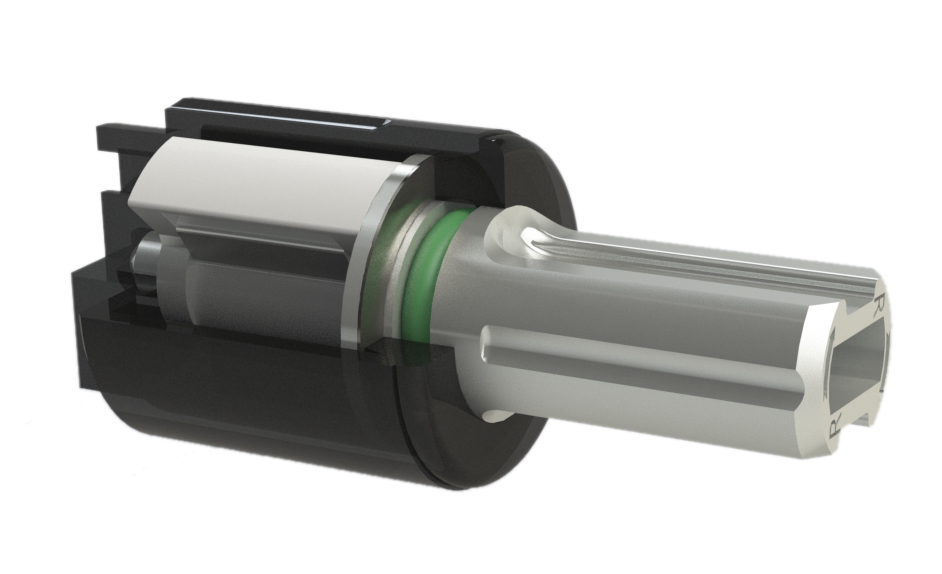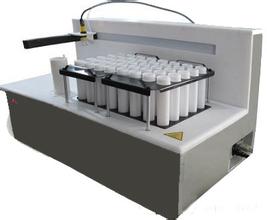Automatic digestion instrument features 1, in terms of digestion, microwave-assisted chemical technology digestion speed is fast, processing a furnace sample 10-100 times faster than the general electric heating plate method
2. Digestion effect is good, high pressure sealed cans are used for microwave heating, and the sample is completely decontaminated, especially for difficult samples.
3. The sample is digested in a closed digestion tank, which greatly reduces the loss of volatile elements. Therefore, making the analysis more accurate
4, less microwave digestion reagents, reducing the blank value and background of the sample
5. The entire digestion process is carried out under confined conditions. Acid reagents do not pollute the environment and are conducive to environmental protection and human health.
6, energy-saving effect is very significant, compared to the traditional way of energy-saving about 80%
7. The parallelism and repeatability of samples processed in the same batch avoid the errors caused by human operations.
Automatic Digestion Instrument Digestion Principle
Weigh 0.2g-1.0g sample into the digestion tank, add about 2mI of water, add an appropriate amount of acid. Usually, HNO3, HCI, HF, H2O2, etc. are selected, and the cans are covered and put into the furnace. When the microwave passes through the sample, the polar molecules rapidly change orientation with the microwave frequency. In the 2450 MHz microwave, the molecular changes direction 2.45 109 times per second, and the molecule rotates back and forth, colliding with the surrounding molecules and rubbing, and the total energy of the molecule increases. The temperature of the sample rose sharply. At the same time, charged particles (ions, hydrated ions, etc.) in the test solution move back and forth in the alternating electromagnetic field by the force of the electric field, and they also collide with neighboring molecules, causing the temperature of the sample to rise. This heating method is totally different from the traditional electric furnace heating method.
(1) Body heating. When the electric furnace is heated, energy is transmitted through heat radiation, convection and heat conduction, and heat is transmitted from the outside to the inside through the wall of the passer to the sample, and the heat is applied through the heat conduction method. Microwave heating is a direct body heating method, microwave can penetrate the inside of the test solution,
At different depths of the sample, the microwaves simultaneously generate thermal effects wherever they go, which not only makes the heating faster but also more uniform. It greatly shortens the heating time and is faster and more efficient than traditional heating methods. For example, oxides or sulfides can be heated to several hundred degrees Celsius in 1 min under microwave (2450MHz, 800W). Another example is Mn02 1.5 grams heated at 650W microwave for 1 minute can be heated to 920K, showing that the rate of warming is very fast. The use of heat in traditional heating methods (heat radiation, conduction and convection) is partly low, and much of the heat is dissipated in the surrounding environment, and microwave heating acts directly on the interior of the material, thus increasing energy efficiency.
   (2) Overheating. Microwave heating will also appear overheating (ie, than boiling temperature
high). When the electric furnace is heated, heat is conducted from the outside to the inside through the wall of the passer to the sample. Air bubbles are easily formed on the surface of the wall. Therefore, overheating does not easily occur, and the temperature is kept at the boiling point because the gasification absorbs a large amount of heat. In the microwave field, the "heating" method is completely different and the energy is directly converted inside the system. Because the system lacks the “core†that forms the “bubble†of the gas, for some low-boiling reagents, overheating can easily occur in a closed container. It can be seen that the reagents in the sealed sample tank can provide higher temperatures. It facilitates the digestion of the sample.
(3) Stir. Because the polar molecules of the reagent and the sample are rapidly transformed with the changing electromagnetic field in the 2450 MHz electromagnetic field, the molecules collide with each other and friction, and the surface of the reagent and the sample are constantly updated, and the surface of the sample is continuously exposed to new reagents. Causes the chemical reaction between the reagent and the sample to accelerate. The alternating electromagnetic field is equivalent to a high-speed stirrer, which stirs 2.45×109 times per second, which increases the rate of chemical reaction and accelerates digestion. From this synthesis, the microwave heating is fast, uniform, and overheating, and new contact surfaces are continuously generated. Sometimes it can also reduce the activation energy of the reaction, change the reaction kinetics, make the microwave digestion ability enhanced, and can eliminate many samples that are difficult to be digested by traditional methods.
From the above discussion, it can be seen that the speed of heating and the speed of digestion are not only related to the power of microwaves, but also related to the composition and concentration of the sample, and the type and amount of reagent used, ie, acid. To digest a sample in a short time, you should choose the appropriate acid, microwave power and time.
The internal structural design is vane, Vane Damper is more suitable for soft close. ABD vane dampers are used to dampen drives, control speed, and many other applications. The damping direction of the vane dampers with continuous rotation can be clockwise, counter clockwise, or in both directions. Vane dampers are widely used in automobile interior decoration, household electric appliances, furniture and bathroom products, etc. Our dampers can make the movement of structures soft, quiet and safe to mitigate the impact, avoid the damage, increase the mechanical life, reduce noise, and improve product quality.
When the axis of rotation is moving, the blades that are connected to the axis of rotation rotate at the same time. The silicone oil in the oil chamber is squeezed between the blade andthe body to the back of the blade. The resistance formed by the pressure of the silicone oil to the area of the blade is the damping torque of the rotating shaft and the blade. The torque generated during rotation is determined by the oil viscosity, the pressure area of the blade and the clearance between the blade and the body.

NOTE:
1. Please contact the corresponding product engineer for specific torque products.
2.The Standard of completion closing:the angle is 90° between Shaft A and Shaft B.
3.It is closing position to assemble the shaft into the housing.
4. Max. cycle rate: 3 cycles/min(Clockwise110 °, 110 ° anti-clockwise for 1 cycle)
5.Operating temperature:0~40℃
6.Storage temperature:-10~60℃

Soft closing time test: Measure the closing time from angle 70 to 0.
Rated Torque (T).
Test Temperature: 23±2℃.
Durability test:
Test Method: From the closing position to opening position, push back to 70°, soft close from 70° to 0°.
Rated Torque (T).
Operation Angle: 0°~110°.
Test Temperature: 23±2℃.
Durability test cycle: 50,000 cycles. The result of product test )>2s.


